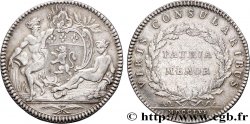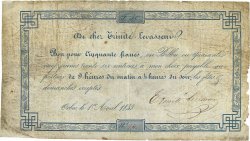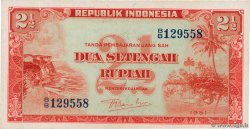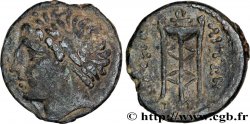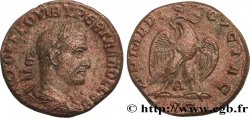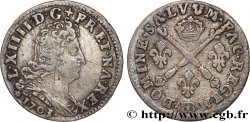Not available.
Item sold on our e-shop
Price : 90.00 €
Item sold on our e-shop
Price : 90.00 €
Type : Jeton Lt 30, Louis de Cotton
Date: 1674
Metal : brass
Diameter : 30 mm
Orientation dies : 6 h.
Weight : 9,04 g.
Edge : lisse
Rarity : R1
Coments on the condition:
Flan assez large avec une frappe centrée. Usure régulière sur les reliefs avec une usure plus forte au centre. Petits graffiti au revers
Catalogue references :
Obverse
Obverse legend : * LOVYS. DE. COTTON. ESCVYER. SR. DE. VAL. PR.ESCHEVIN. D. LYON.
Obverse description : Écu aux armes de Louis de Cotton, timbré d’un casque taré de face, orné de lambrequins et ayant pour cimier un lion issant tenant un écusson aux armes de Cotton de Chenevoux.
Reverse
Reverse legend : * ÆQVITAS * VRBIS * CONSERVATIO *.
Reverse description : L’Équité assise à gauche s’appuie sur un faisceau renversé et tient une balance, à ses pieds un lion ; à l’exergue : .1674..
Reverse translation : (L'Équité est la gardienne de la cité).
Commentary
Les armes de Louis de Cotton portent d’azur au chevron d’or accompagné de deux roses et d’un croissant d’argent.
The arms of Louis de Cotton are azure with a golden chevron accompanied by two roses and a silver crescent
The arms of Louis de Cotton are azure with a golden chevron accompanied by two roses and a silver crescent








 Report a mistake
Report a mistake Print the page
Print the page Share my selection
Share my selection Ask a question
Ask a question Consign / sell
Consign / sell
 Full data
Full data